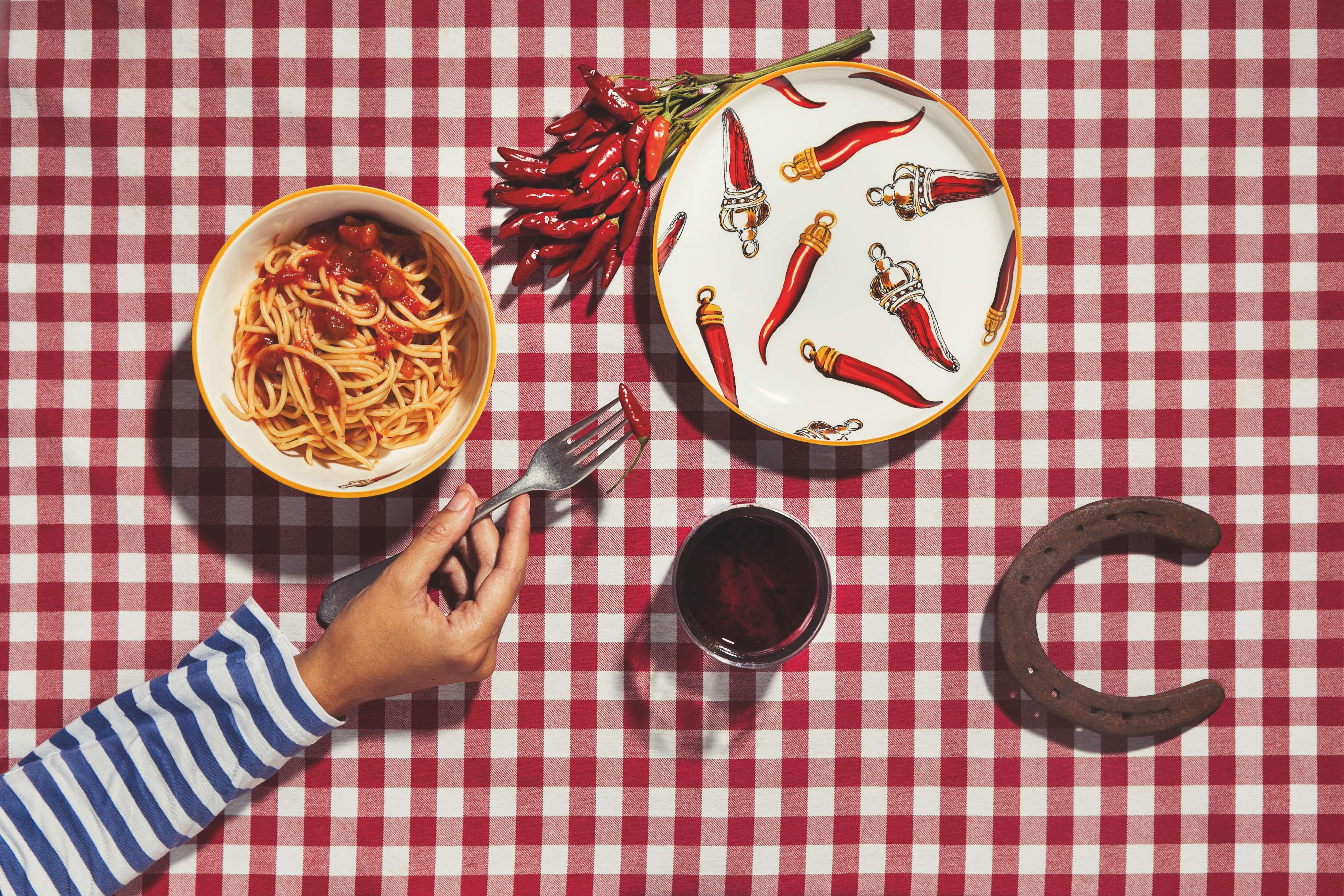
The Neapolitan Cornicello: a Real Italian Story
From our last trip to Napoli, we came back with our latest collection: the Neapolitan Cornicelli Chillies Plates!
It is a tribute to the traditional talisman called “corno”, which in Italian means horn, that you can find hanging everywhere in the streets of the city of Naples.
The color and shape of the red cornicelli look similar to chili pepper. Garlands of red chili peppers can be found hanging all over the streets of Naples, as a symbol of good luck. During the Middle Ages, the color red had a double meaning: it symbolized victory over enemies, including the Devil, and it symbolized good luck. In Naples, it is recognized as a symbol of good luck and protection. Artisans of old Naples began to craft a little horn with an odd shape; “tuosto, stuorto e cu a’ punta” which means, tough and twisted at the tip. Those who acquired such an amulet would be blessed with good luck.
Wherever you go in the city of Naples, you will see thousands of “cornicelli” of every shape and size. While the meaning of this ubiquitous talisman is often overlooked, they are emblematic of ancient Neapolitan superstition. The cornicelli reaches back over many centuries, demonstrating the persistent value of good health and family which is so fundamental in Italian culture.

Explore our latest collection: the Neapolitan Cornicelli Chillies Plates, which includes the plate, the bowl and the mug!


